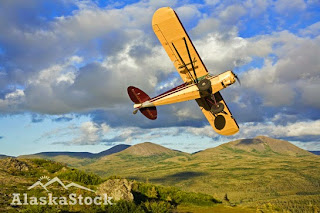© Jeff Schultz/AlaskaStock.com
Alaska has more shoreline than the entire lower 48 and some of the most spectacular is in the Prince William Sound in Southcentral Alaska. At Alaska Stock Images, you will find a wide variety of Alaska photos including Prince William Sound Photos. To find more pictures of Alaska or photos of Prince William Sound, visit our search page.
Prince William Sound is a uniquely beautiful area of Alaska's coastline. Surrounded by glacially-carved fjords on the north Gulf of Alaska, Prince William Sound covers roughly 3,000 miles of shoreline and supports large numbers of sea birds, marine mammals and some of the world's richest herring and salmon fisheries. Five major salmon hatcheries operate in the Sound. Other important resources include dungeness crab, shrimp, halibut and other groundfish. The Sound is home water to one of the world's densest populations of sea otters and killer whales. Seals, sea lions are also residents and, when combined with the otters and orcas, represent one of the most profuse population worldwide of marine mammals.
Historically, the sound was also a meeting place of diverse cultures, including the resident Chugach Eskimos and Eyak Indians, and Asian and European explorers and pioneers. Its location, where north temperate and sub-arctic conditions overlap, results in a wealth of natural resources, safe harbors, and natural beauty.
Prince William Sound is the northern boundary of the world's farthest north temperate rainforest. This coastal forest strip, primarily comprised of slow growth Sitka spruce, mountain hemlock and western hemlock, is critical habitat to Sitka black-tailed deer, mountain goats and is home to a wide variety of other animals. Two hundred and forty species of birds - notably about 3,000 bald eagles and a dozen major seabird colonies - are found in the Sound and the adjacent Copper River Delta region. During May, Cordova hosts the annual Copper River Delta Shorebird Festival. As many as 5 million shorebirds rest and feed here during spring migration.
Cordova, a community of 3,000 year-round residents on the eastern shore of Orca Inlet, is one of the major communities located on the Sound and yet it has no access by road. A bridge was built in 1908 and cost 1.5 million dollars. It served the purpose of transporting copper ore from the Kennecott Copper Mine across the Copper River and all the way to Cordova using railroad cars. It was used for thirty years until the Kennecott Copper Mine closed. In 1958 it was changed from a railway bridge to a vehicle bridge, but it received major damaged in the 1964 earthquake and today is impassable by vehicles. Known as the "Million Dollar Bridge" it is a major tourist attraction in the area. Cordova does, however, offer good access to both Prince William Sound and the adjacent Copper River Delta, the largest contiguous wetlands in the Western United States. Once a railroad gateway to Alaska's interior, Cordova today is a hub of commercial fishing activity with a growing tourism industry. Its facilities include a modern airport with daily service to Anchorage and Seattle, a new hospital and regular ferry service to Valdez, Whittier and Seward.
The largest community on the Sound is Valdez. The nearby Keystone Canyon, Thompson Pass, Worthington Glacier, and Lowe River, have served to keep Valdez as a major tourist destination since the mid 1900's. Valdez is also the terminus of the Trans-Alaska Pipeline. However, the oil industry in the Sound has had a mixed history. Although Alaska's largest income source is through the oil industry, the Prince William Sound has paid a high price. In 1989, the Exxon Valdez oil tanker ran aground and lost over 11 million gallons of crude into the Sound near Bligh Reef., the grounding of the Exxon Valdez prompted both the state and federal governments to significantly alter the laws, regulations and strategies relating to oil pollution. Ten years after the oil spill, a study concluded that although it is clear that many fish and wildlife species injured by the spill have not fully recovered, commitment has been made "to maintain cooperation at all levels so that the resources, people and communities impacted by the Exxon Valdez oil spill are restored and that future spills are prevented." (Alaska Department of Environmental Conservation Final Report)





